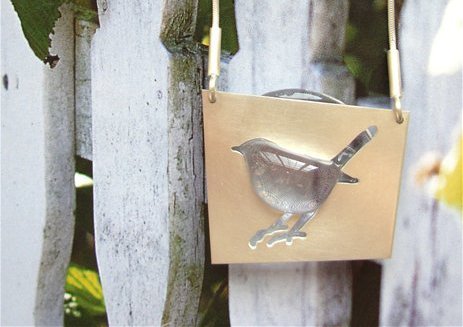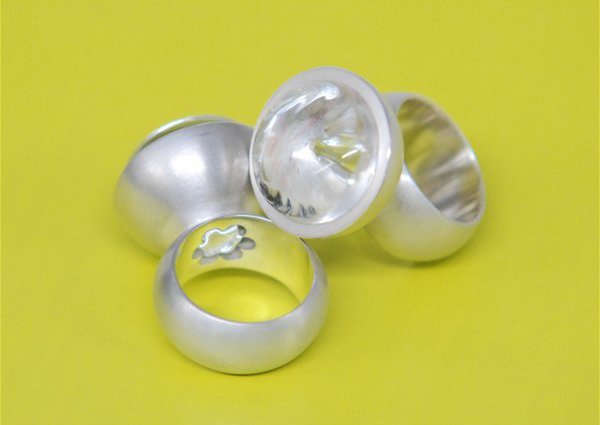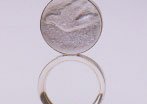
Antje exhibits her jewellery in the UK and Europe, and has worked as a design consultant and industrial designer.
Antje undertook a three-year goldsmith apprenticeship before studying Jewellery Design at the Fachhochschule für Gestaltung in Schwäbisch Gmünd in Germany. She subsequently moved to England, graduating in Jewellery & Metal from the Royal College of Art in 1994.
She taught for four years at the University of Plymouth in 3D Design. Since 1999, Antje has been a senior lecturer at the University of Hertfordshire; in 2010 she became the Programme Leader for Contemporary Applied Art. Antje joined the Royal College of Art in 1996 as a visiting lecturer and became a tutor in Jewellery in 1998. Antje is responsible for the programme elective Designing for Industry‚ which offers students the opportunity to design and gain an insight into related creative industries.
Key details
School, Centre or Area
Expertise
Gallery
More information
Research interests
Antje experiments with glass, which is somewhat unusual for jewellery. She transforms it into organic shapes based on forms found in nature. The mainly functional chains and settings are restrained in their design and only give a hint of ornament. The predominant use of silver underlines her sensitivity for materials and the purity of forms she strives for. Her language as an artist jeweller is poetic and her jewellery intends to create a calming effect, either visually for the viewer or by touch for the wearer. Antje's jewellery is meant to have a playful element.
Antje is conducting a funded research project, which aims to explore ways in which molten glass can be fused with sterling silver, to create wearable pieces of jewellery. Using the magnification property of clear glass to highlight intrinsic pattern on the metal and experimenting with different form and pattern creating techniques, like rapid prototyping and photo etching to hold and attach the glass to the metal.
Practice
Antje’s jewellery pieces are pared down forms, hovering between the literal and the metaphorical, evolved from organic elements found in nature.
There is a poetic quality of animism within them, which induces a calming effect, both visually and through continuous wear. By interacting with the pleasingly simple shapes, the wearer achieves a state of relaxed contemplation. A distinctive feature of Antje’s design practice is her selection and treatment of a range of raw materials and metals – ceramic, glass, jet, horn – which are explored through the use of digital technologies such as rapid prototyping and laser cutting to achieve a contemporary aesthetic applicable in many contexts.
Antje’s recent research expands on the concepts implicit in her craft practice, linking haptic knowledge and desire to practical needs: holding, touching, feeling a practical object on a daily basis – the external aesthetic engages a human response, while the internal technology activates the function. Approaching this dilemma as a jeweller, who mainly works with accessories for the body, she views medical devices in the same way, as an accessory and as personalised ornamentation for the body.
External collaborations
(2014/5) Collaborator on the METALLICA project involved using Microsoft mobile technology to develop new aluminium metal surface finishes and their potential technologies, with the theme, ‘Finish follows function’. Emphasis is placed on combining hand crafted skills with industrial processes, aiding grip by combining materials, subtle use of colour, and anti-scratch surfaces – aesthetics balanced with practicality.
(2015/6) Collaborator with DIGITAL HACKLAB, to initiate new research into material makeovers for asthma inhalers: a medical application of craft practice. The project investigated ways in which a necessary medical device could be made more appealing to encourage active daily use among specific client groups. Following the results of focused questioning, a series of personalized design solutions were presented for both adult and child users, which treated the medical device with the design sensibilities of a fashion accessory to enhance usage. This project was presented at the CRAFT FUTURES conference in September 2017 as a valid example of how craft practice can be used in a medical context.


